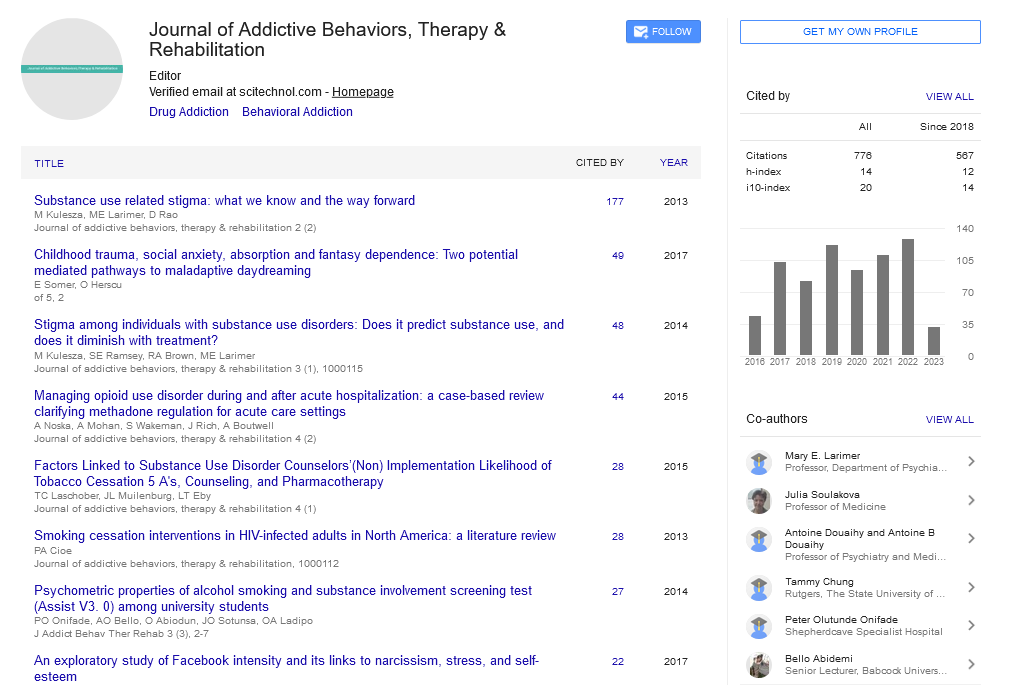Synthesis and biological evaluation of a novel Tc-99m radioligand for brain
Najoua Mejri, Nadia Malek saied, Mouldi Saidi
Agricultural and environmental use of nuclear applications, CNSTN, Tunisia
: J Addict Behav Ther Rehabil
Abstract
The present study investigated eight rice lines (Rupsal, Background and aim: The synthesis, characterization and biological evaluation of N-Tolueneferrocenecarboxamide labeled with technetium-99m (99mTc-TTCC) is reported. Biological studies in Wistar rats showed the ability of 99mTc- TPCC to cross the intact blood-brain barrier. Methods: The in vivo behavior of 99mTc -TTCC was evaluated in healthy wistar rats at different time points. Results: In vivo biodistribution indicated that this complex had good brain uptake (1.32 % ID/g at 5 min and 0.65 % ID/g at 60 min) and good retention (about 50% of the activity was retained in the brain at 60 min post-injection). Regional brain distribution study showed that hippocampus, where the 5-HT1A receptor density is high, had the highest uptake (0.72% ID/g at 5 min p.i.) and the cerebellum, where the 5-HT1A receptor density is low, had the lowest uptake (0.12% ID/g at 5 min p.i.). After blocking with 8-hydroxy-2-(dipropylamino) tetralin, the uptake of hippocampus was decreased significantly from 0.72% ID/g to 0.18% ID/g at 5 min p.i., while the cerebellum had no significant decrease. This result indicates that 99mTc complex has specific binding to 5-HT1A receptor. Conclusion: A 99mTc -TTCC has been successfully prepared in good yield. Based on the results reported here, we conclude that 99mTc -TTCC is a lipophilic compound. The biodistribution studies in mice showed that this compound had a significant brain uptake.
Biography
E-mail: najoua.mejri@gmail.com
 Spanish
Spanish  Chinese
Chinese  Russian
Russian  German
German  French
French  Japanese
Japanese  Portuguese
Portuguese  Hindi
Hindi 